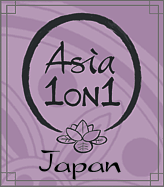|
|
|
|
The following list of books, DVDs, CDs, videos, newspapers, etc., are media that we can recommend to you if you are contemplating a visit to this country. We have tried to identify three books, including at least one guidebook, that we would most strongly recommend you read or at least browse before you go. If you have more time and interest you can get as deeply involved as you like. You may find some of these materials more relevant when you come back and want to get answers to questions that developed in-country. We also like to recommend various DVDs with films or documentaries that you should find educational. They will also give you a glimpse of the country before you actually arrive. Most of these items have a link to Amazon where you can purchase them if you like, but some materials are not available at Amazon (is that really possible?) and have links to other sites. We hope you find this list helpful.
|
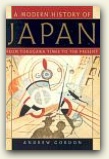
|
A Modern History of Japan From Tokugawa Times to the Present
By Andrew Gordon
Oxford University Press, New York, N.Y., 2003
In A Modern History of Japan From Tokugawa Times to the Present, Andrew Gordon paints a richly nuanced and strikingly original portrait of the last two centuries of Japanese history. He takes students from the days of the shogunate--the feudal overlordship of the Tokugawa family--through the modernizing revolution launched by midlevel samurai in the late nineteenth century; the adoption of Western hairstyles, clothing, and military organizations; and the nation's first experiments with mass democracy after World War I. The book examines Japan's struggle to define the meaning of its modernization, from villages and urban neighborhoods, to factory floors and middle managers' offices, to the imperial court. Most important, it illuminates the interconnectedness of Japanese developments with world history, demonstrating how Japan's historical passage represents a variation of a process experienced by many nations and showing how the Japanese narrative forms one part of the interwoven fabric of modern history. Top
|
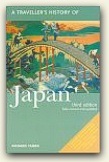
|
A Traveller's History of Japan
By Richard Tames
Interlink Books, Northampton, Mass., 2005
A Traveller's History of Japan not only offers the reader a chronological outline of the nation's development, but also provides an invaluable introduction to its language, literature and arts, from kabuki to karaoke. Political, social, and industrial history and economics are also well covered. This clearly-written history explains how a country embedded in the traditions of Shinto, Shoguns, and Samurai has achieved stupendous economic growth and dominance in the 21st century.
Particular attention is paid to the classic historical sites featured on any visitor's itinerary. Special emphasis is also given to the writings and reactions of travelers through the centuries. Top
|
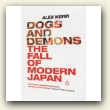
|
Dogs and Demons: The Fall of Modern Japan
By Alex Kerr
Gardners Books Ltd., England, 2002
How did one of the world's greatest and most ancient civilizations reach the state of economic, cultural, and environmental decline that defines it today? Why, through decades of spectacular economic progress, did nobody comment on the terrifying price paid by ordinary Japanese?
Now economically devastated, shunned by foreign tourists and regularly voted by visiting businessmen as one of the world's least appetizing destinations, Japan must now wake up to the 'state-sponsored vandalism' that has crushed families into tiny flats, bulldozed and cemented over the banks of most of the country's rivers, and destroyed its historic towns.
A long-time resident of Japan, Alex Kerr is ideally placed to write this angry and entertaining book about the ruination of a country he loves. Top
|
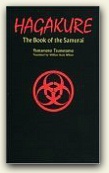
|
Hagakure: The Book of the Samurai
By Yamamoto Tsunetomo
Kodansha International, New York, N.Y., 2004
Hagakure ("In the Shadow of Leaves") is a manual for the samurai classes consisting of a series of short anecdotes and reflections that give both insight and instruction in the philosophy and code of behavior that foster the true spirit of "Bushido"--the Way of the Warrior. It is not a book of philosophy as most would understand the word: it is a collection of thoughts and sayings recorded over a period of seven years, and as such covers a wide variety of subjects, often in no particular sequence.
The work represents an attitude far removed form our modern pragmatism and materialism, and possess an intuitive rather than rational appeal in its assertion that Bushido is a "Way of Dying," and that only a samurai retainer prepared and willing to die at any moment can be totally true to his lord.
While Hagakure was for many years a secret text known only to the warrior vassals of the Hizen fief to which the author belonged, it later came to be recognized as a classic exposition of samurai thought and came to influence many subsequent generations, including Yukio Mishima. Top
|
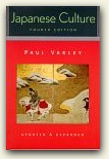
|
Japanese Culture
By Paul Varley
University of Hawai'i Press, Honolulu, Hawaii, 2000
For nearly three decades Japanese Culture has garnered high praise as an accurate and well-written introduction to Japanese history and culture. The fourth edition includes expanded sections on numerous topics, among which are samurai values, Zen Buddhism, the tea ceremony, Confucianism in the Tokugawa period, the story of the forty-seven ronin, Mito scholarship in the early nineteenth century, and mass culture and comics in contemporary times. Top
|
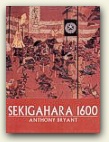
|
Sekigahara 1600
By Anthony Bryant
Osprey Publishing, Oxford, U.K., 1995
Sekigahara was the most decisive battle in Japanese history. Fought against the ritualised and colorful backdrop of Samurai life, it was the culmination of a long-standing power struggle between Tokugawa leyasu and Hashiba Hideyoshi, two of the most powerful men in Japan. This book tells of how the armies of the two sides met on the plain of Sekigahara, on October 21, 1600, in thick fog and deep mud. By the end of the day 40,000 heads had been taken and leyasu was master of Japan. Within three years the Emperor would grant him the title he sought--Shogun, undisputed dictator of Japan. Top
|
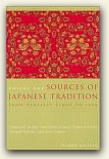
|
Sources of Japanese Tradition, Volume One: From Earliest Times to 1600
By Wm. Theodore de Bary, Donald Keene, et al.
Columbia University Press, New York, N.Y., 2002
Sources of Japanese Tradition is a best-selling classic, unrivaled for its wide selection of source readings on history, society, politics, education, philosophy, and religion in the "Land of the Rising Sun."
Volume I spans the period from the early Japanese chronicles to the end of the sixteenth century, including readings on early and medieval Shinto and on the tea ceremony; readings on state Buddhism and Chinese political thought influential in Japan; and sections on women's education, medieval innovations in the uses of history, and laws and precepts of the medieval warrior houses. Together, the sections shed light on the development of Japanese civilization in its own terms, without reference to Western parallels.
This book will continue as an invaluable reference in understanding Japanese culture for both students and lay readers alike. Top
|
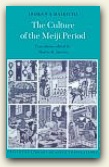
|
Culture of the Meiji Period, The
By Marius B. Jansen, Editor
Princeton University Press, Princeton, N.J., 1988
"A fascinating account of aspects of Japanese culture between 1868 and the early twentieth century. . . . Irokawa Daikichi is an indefatigable researcher, and the fruits of his own and others' labors on back roads and in old storehouses are amply represented here. Moreover, he has discovered materials untouched since the Meiji period, and he is able to interpret them in fresh, provocative ways. He makes excellent use of poetry, letters, diaries, and songs to probe the mentalite of peasants and rustic intellectuals, and he interprets his findings in a way that challenges major post-World War II trends in historiography." --J. Victor Koschmann, Journal of Asian Studies Top
|
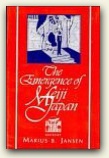
|
Emergence of Meiji Japan, The
By Marius B. Jansen
Cambridge University Press, New York, N.Y., 1997
Japan underwent momentous changes during the middle decades of the nineteenth century. Feudal divisions under military leaders that had characterized Japan for many centuries were replaced by a central government headed by the traditional monarch, and long-standing social and political divisions were abandoned in order to build a modern nation state. These chapters chronicle the crop failures and famine of the Tempo era in the 1830s, the crisis of values and confidence that popular culture displayed in the last half century of Tokugawa rule, and the political process that finally brought down the Tokugawa regime and ended centuries of warrior rule. They go on to discuss the peasant and samurai rebellions against the Meiji government, and the broader movement of the 1880s called "Freedom and People's Rights" that helped to push the government toward a grant of representative government with the Meiji constitution of 1889. The significance of Japan's Meiji transformation for the rest of the world is the subject of the final chapter, which discusses Japan's drive to Great-Power status. "Constitutional rule at home, imperialism abroad" became linked as goals for early twentieth-century Japan. Top
|
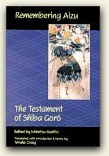
|
Remembering Aizu: The Testament of Shiba Goro
By Ishimitsu Mahito, Editor
University of Hawai'i Press, Honolulu, Hawaii, 1999
The Meiji Restoration of 1868 is most often seen as a glorious event marking the overthrow of Tokugawa feudalism and the beginning of Japan's modern transformation. Yet it had its dark side. The Aizu domain in northeastern Japan had staunchly supported the old regime. For this it was attacked by the new government's forces from Choshu and Satsuma in the autumn of 1868. Its castle town was burned to the ground, and during a month-long siege, whole families perished. After defeat, the domain was abolished and its samurai population exiled to barren terrain in the far north.
Shiba Goro was born into an Aizu samurai family in 1859. He was just ten years old at the time of the attack, which claimed most of his family. In the cruel world of exile, he lived with his father on the edge of starvation, struggling to survive. Eventually making his way to Tokyo, he became a servant, and though born in an enemy domain, gained entrance to a military school of the new regime. Shiba's abilities were recognized, and he rose through the officer ranks to become a full general--a singular distinction for an Aizu samurai in an army dominated by former samurai of the Choshu domain.
Remembering Aizu tells of Shiba's earlier years. It is an extraordinary story that provides insights and material for a social history of the Restoration and its aftermath. But above all, it is a vividly-rendered personal account of courage and determination, loss and remembrance.
Top
|
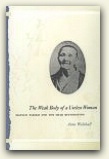
|
Weak Body of a Useless Woman, The: Matsuo Taseko and the Meiji Restoration
By Anne Walthall
The University of Chicago Press, Chicago, Ill., 1998
In 1862, at the age of fifty-one, Matsuo Taseko left her old life behind by traveling to Kyoto, Japan's ancient imperial capital. Peasant, poet, and local political activist, Taseko went to Kyoto to support the nativist campaign to restore the Japanese emperor and expel Western "barbarians." Although she played a minor role in the events that led to the Meiji Restoration of 1868, her actions were nonetheless astonishing for a woman of her day. Honored as a hero even before her death, Taseko has since been adopted as patron saint by rightist nationalists. In telling Taseko's story, Anne Walthall gives us not just the first full biography in English of a peasant woman of the Tokugawa period (1603-1868), but also fresh perspectives on the practices and intellectual concerns of rural entrepreneurs and their role in the Meiji Restoration. Writing about Taseko with a depth and complexity that has thus far been accorded only to men of that time, Walthall has uncovered a tale that will captivate anyone concerned with women's lives and with Japan's dramatic transition to modernity. Top
|
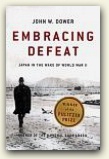
|
Embracing Defeat: Japan in the Wake of World War II
By John W. Dower
W. W. Norton & Company, Inc., New York, NY, 1999
Embracing Defeat won the 2002 Pulitzer Prize for general nonfiction. "The writing of history doesn't get much better than this. MIT professor Dower (author of the NBCC Award-winning War Without Mercy) offers a dazzling political and social history of how postwar Japan evolved with stunning speed into a unique hybrid of Western innovation and Japanese tradition. The American occupation of Japan (1945-1952) saw the once fiercely militarist island nation transformed into a democracy constitutionally prohibited from deploying military forces abroad. The occupation was fraught with irony as Americans, motivated by what they saw as their Christian duty to uplift a barbarian race, attempted to impose democracy through autocratic military rule. Dower manages to convey the full extent of both American self-righteousness and visionary idealism. Dower demonstrates an impressive mastery of voluminous sources, both American and Japanese, and he deftly situates the political story within a rich cultural context. --Copyright 1999, Reed Business Information, Inc. Top
|
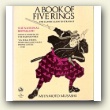
|
A Book of Five Rings
By Miyamoto Musashi
The Overlook Press, Woodstock, NY, 1974
The Japanese entrepreneur is not nurtured at an Asian equivalent of our Harvard Business School. Instead, he studies, lives, and works according to an almost-mythic tome written in 1645 by the great Samurai, Miyamoto Musashi. Musashi was Japan's most renowed warrior. By age 30 he had fought and won over 60 duels by killing his opponents. The invincible Musashi eventually retired to a cave where he completed, a few weeks before his death, the classic A Book of Five Rings. He wrote it not only as a thesis on battle strategy, but "for any situation where plans and tactics are used." Not surprisingly, business executives of present-day Japan revere Musashi's philosophy as a guide for their daily decisions, viewing the running of a business like a military operation. Top
|
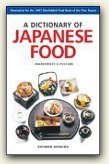
|
A Dictionary of Japanese Food
By Richard Hosking
Tuttle Publishing, North Clarendon, VT, 2003
At last, what every Westerner in a Japanese restaurant or market needs: the first truly comprehensive dictionary of Japanese food and ingredients. Standard dictionaries can often mislead us--with "akebia" for "akebi," "sea cucumber" for "namako," "plum" for "ume." Hosking's dictionary includes not only dishes and ingredients--everything from the delicate mitsuba leaf to the dreadful okoze fish, but one hundred small line drawings and 17 appendices that disclose such aspects of Japanese culture as the making of miso to the tea ceremony and the influence of vegetarianism.
With Japanese-English and English-Japanese sections, A Dictionary of Japanese Food explains the nuances and eliminates the mysteries of Japanese food. --Amazon.com
Top
|
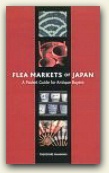
|
Flea Markets of Japan
By Theodore Manning
Kodansha International, Ltd., Tokyo, 2003
This is the first-ever book written to help non-Japanese cope with the challenges of shopping at flea markets, enabling them to go out and get the goods they are after. This invaluable reference includes: a list of 115 flea markets, plus detailed directions for getting there; names and descriptions of about 450 antiques and artifacts, conveniently classified into 18 categories; photographs of the most popular items for sale; a "survival kit" of over 250 shopping-related Japanese words and phrases; and a complete explanation of flea-market bargaining techniques, including tips for getting the lowest price and a special section on etiquette. Let the shopping begin! Top
|
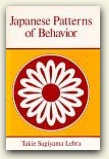
|
Japanese Patterns of Behavior
By Takie Sugiyama Lebra
University of Hawai'i Press, Honolulu, Hawaii, 1976
Reared and educated in Japan, Takie Sugiyama Lebra is well-qualified to comment on Japanese interpersonal relations. She has published books on Japanese social organization, Japanese culture and behavior, and Japanese women, as well as articles on Japanese religion, moral values, and healing. Her conclusions in this book are based on her personal experiences as a "native" and as a critical observer, as well as on extensive Japanese and Western literature relevant to the subject. This book will remain a standard reference for those interested in better understanding the behavior and personality of Japanese. Top
|
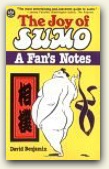
|
Joy of Sumo, The: A Fan's Notes
By David Benjamin
Charles E. Tuttle Company, Rutland, VT, 1992
Just what is sumo? Is it a sport, a religion, an aesthetic feast, living traditional culture, or a battle of titans? The simple answer is Yes! The Joy of Sumo strips away the veneer of culture and looks at Japan's national sport through the eyes of a true aficionado. Guaranteed to provide invaluable information for eveyone from the novice fan to the expert, this is the first book to do it with the same humor normally associated with football, basketball, or baseball. In fact, after reading this book, the sportslover's world will never be quite the same--just broader and more fun! Top
|
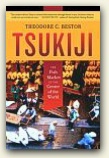
|
Tsukiji: The Fish Market at the Center of the World
By Theodore C. Bestor
University of California Press, Los Angeles, Calif. , 2004
Located only blocks from Tokyo's glittering Ginza shopping district, Tsukiji--the world's largest seafood market--is a famous landmark for sushi chefs, fishmongers, and foreign tourists alike. In this absorbing ethnographic study, Theodore C. Bestor--who has done fieldwork since 1989 at fish markets and fishing ports in Japan, North America, Korea, and Europe--explains the complex social institutions that organize Tsukiji's hundreds of morning auctions. His portrait of the marketplace is set against analyses of economic trends in Japan, changes in distribution and consumption, and the increasing globalization of the seafood trade. Bestor brings to life the sights and sounds of the marketplace, Tsukiji's rich internal culture, its central place in Japanese cuisine, and the mercantile traditions that have shaped the marketplace since the early seventeenth century. Top
|
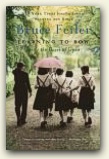
|
Learning to Bow: Inside the Heart of Japan
By Bruce Feiler
Perennial (HarperCollins Publishers, Inc.), New York, N.Y. , 2004
Learning to Bow has been heralded as one of the funniest, liveliest, and most insightful books ever written about the clash of cultures between America and Japan. With warmth and candor, Bruce Feiler recounts the year he spent as a teacher in a small rural town. Beginning with a ritual outdoor bath and culminating in an all-night trek to the top of Mt. Fuji, Feiler teaches his students about American culture, while they teach him everything from how to properly address an envelope to how to date a Japanese girl. Top
|
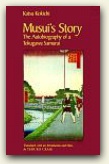
|
Musui's Story
By Katsu Kokichi
The University of Arizona Press, Tucson, Ariz., 1991
Katsu Kokichi (1802-1850) was a low-ranking samurai who lived during the last decades of the Tokugawa period of Japan. Upon his retirement he wrote an autobiography that offers modern readers a richly-detailed account of daily life in Edo during the early nineteenth century.
"Attractively translated by Teruko Craig, it depicts the life of a man born into a family with the hereditary privilege of audience with the shogun, yet he shamelessly consorted with the riffraff of Edo, ran a protection racket, lied, cheated, and stole. . . . Anyone interested in Japanese history and society or in how people interact with each other in whatever age or place will enjoy reading this book." --Monumenta Nipponica Top
|

|
Shig: The True Story of an American Kamikaze
By Shigeo Imamura
American Literary Press, Inc., Baltimore, MD, 2001
Professor Shigeo Imamura's memoir tells the story of how a young American citizen was caught up in the atmosphere of pre-war Japan, surrendered himself to the vorex of ultranationalism, became "110% Japanese" and volunteered unquestioningly as a kamikaze. It is only with the accumulation of detail and the occasional toss-away comment about what he was told to think about the epic struggle between his two countries, that the reader realizes that Shig's story delivers a powerful anti-war message. It celebrates the independent critical thinking essential for rejection of the absolutes of tyranny and totalitariansim. Top
|
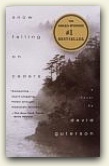
|
Snow Falling on Cedars
By David Guterson
Vintage Contemporaries, New York, N.Y., 1995
San Piedro Island, north of Puget Sound, is a place so isolated that no one who lives there can afford to make enemies. But in 1954 a local fisherman is found suspiciously drowned, and a Japanese American named Kabuo Miyamoto is charged with his murder. In the course of the ensuing trial, it becomes clear that what is at stake is more than one man's guilt. For on San Piedro, memory grows as thickly as cedar trees and the fields of ripe strawberries--memories of a charmed love affair between a white boy and the Japanese girl who grew up to become Kabuo's wife; memories of land desired, paid for, and lost. Above all, San Piedro is haunted by the memory of what happened to its Japanese residents during World War II, when an entire community was sent into exile while its neighbors watched.
Gripping, tragic, and densely atmospheric, Snow on Cedars is a masterpiece of suspense--but one that leaves us shaken and changed. Top
|
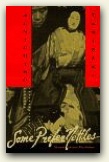
|
Some Prefer Nettles
By Junichiro Tanizaki
Vintage Books, New York, N.Y., 1995
From the writer who launced Japanese literature into the modern era comes an exquisitely-nuanced novel about the allure of Japanese tradition--and about the profound disquiet that accompanied its passing.
In Tokyo in the 1920s, Kaname and his wife, Misako, share a parody of a progressive Western marriage. They have long since stopped sleeping together, and Kaname sanctions his wife's liaison with another man. But at the heart of their arrangement lies a sadness that impels Kaname to take refuge in the past, in the serene rituals of the classical puppet theater--and in a growing fixation with the coquettish, doll-like O-hisa, his father-in-law's mistress.
Ethereally suggestive, psychologically complex, Some Prefer Nettles is a major work of fiction that addresses the crisis of every culture as it hurtles into modernity. Top
|

|
Tokyo Sights & Insights: Exploring the City's Back Streets
By Ryosuke Kami
Charles E. Tuttle Company, Inc., Rutland, VT, 1992
Tokyo Sights & Insights is the unique work of Ryosuke Kami, artist, essayist, and native Tokyoite. Weekends Mr. Kami bicycles about his favorite city in search of Tokyo sights to capture on his sketch pad; weeknights he draws upon these same sketches to produce the insights that fill this book. From his book you will learn such things as the connection between bone-setting and judo, why people from Fukushima distrust those from Yamaguchi, why seaweed shops are located in Nihombashi, the unlikely fate of the last Tokugawa shogun, and the unlucky voyage of the Lucky Dragon V.
This book is certain to delight and educate first-time visitors and long-term residents alike. Top
|
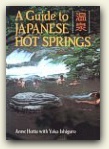
|
A Guide to Japanese Hot Springs
By Anne Hotta and Yoko Ishiguro
Kodansha International, Ltd., New York, NY, 1986
A Guide to Japanese Hot Springs is a comprehensive guide to the ultimate Japanese experience--over 160 select hot springs throughout Japan are reviewed, from rock-lined river pools to mountaintop hot tubs. The book also includes: clear maps, with hot springs arranged by geographical region; the dos and don'ts of bathing etiquette; recommended accommodations for both high- and low-budget travelers; chemical properties of the waters at each spring and their health benefits; and information on local delicacies, traditions, festivals, and places to visit. Top
|
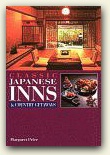
|
Classic Japanese Inns & Country Getaways
By Margaret Price
Kodansha International, Ltd., Tokyo, 1999
Like England's engaging B&Bs, the refined taverns of Japan constitute one of the world's great traditions of inn-keeping. The tan tatami rooms, the soft light filtering through shoji screens, the epicurean banquets, the impeccable service--all of these are elements that make a visit to one of Japan's classic inns a once-in-a-lifetime experience.
From the $1,000-a-night fantasy weekend retreats where visiting celebrities from Chaplin to Clapton have stayed, to the $40-a-night hidden gems run by a kimono-clad innkeeper, Ms. Price has culled the best from a vast field with a discerning eye. What each inn provides is atmosphere, exotic cuisine, and tasteful decorations--in other words, a special inn experience as enchanting and memorable as anything Japan has to offer. Top
|
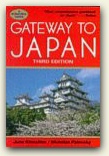
|
Gateway to Japan
By June Kinoshita and Nicholas Palevsky
Kodansha International, New York, N.Y., 1998
"An excellent planning tool, the heart of this guide to Japan, published by Kodansha, is a region-by-region catalog of attractions, history, art, culture and travel information. It's the most useful and comprehensive book of its kind on the market, featuring [bilingual] maps and photographs, and overflowing with information on where to go and what to do." --Longitude Books Top
|
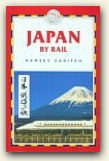
|
Japan by Rail
By Ramsey Zarifeh
Trailblazer Publications, Surrey, U.K., 2002
Japan is steeped in legend and myth, perhaps the greatest of which is the popular misconception that the country is simply too expensive to visit. The real secret to travelling around the country on a budget is the Japan Rail Pass. With this pass you can travel on some of the fastest trains in the world as often as you like for as long as you please--and all for one bargain price. Use this comprehensive guide in conjunction with a rail pass to get the most out of your trip to Japan. Features include: practical information on planning your trip and getting to Japan; city guides and maps, including where to stay (all budgets), where to eat, and what to see in 29 towns and cities; kilometer-by-kilometer route guides--covering train journeys from the coast into the mountains, from temple retreat to sprawling metropolis, and from sulphurous volcano to windswept desert (34 route maps); and railway timetables and routes for bullet trains. Top
|
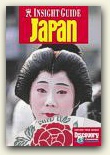
|
Japan--Insight Guides
By Scott Rutherford and Brian Bell, Editors
APA Publications, Singapore, 2000
Japan--Insight Guides provides in-depth background information; evocative photography that vivdly conveys a sense of everyday life; illuminating text that brings to life the islands' history, culture, arts, politics, flora and fauna, and, above all, their people; incisive evaluations from Tokyo's Ginza to Kyoto's ancient capital, from the heights of Mt. Fuji to the tranquil forests of Hokkaido and serene islands of Okinawa; detailed, cross-referenced maps in which all sites are clearly highlighted and numbered in relation to the text; and full listings of all the travel details, hotels, restaurants, museums, and phone numbers you'll need on your trip. Top
|
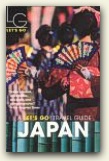
|
Let's Go Japan
By Teresa Elsey, Editor
St. Martin's Press, New York, NY, 2004
Let's Go Japan brings independent, budget-savvy travelers closer to the world by providing the most up-to-date information. The guidebook includes: entries in a range of price levels with money-saving advice for this expensive country; must-have tips for planning your trip, getting around, and staying safe; detailed coverage of food and drink, including a Fukuoka noodle tour; a crash course in Japanglish to help you communicate with locals; extensive coverage of less tourist-visited islands; detailed maps of cities, towns and the outdoors; cultural connections--sink into sake at a spectacular bathhouse theme park; inside scoops and hidden deals--save thousands of yen on flights within Japan; and off the beaten path--sip pineapple wine at the blissful Nago Pineapple Park. Top
|
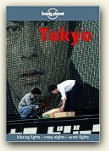
|
Lonely Planet Tokyo
By John Ashburne and Chris Rowthorn
Lonely Planet Publications, Oakland, CA, 2001
Tokyo's ultra-modern appearance belies a rich cultural heritage. Equally comfortable under neon signs or in a garden shrine, Tokyo's citizens are truly versatile. You'll find this guidebook indispensable in Japan's most cosmopolitan, accepting--and confusing--city. Its many features include: a 32-page color map section, including a subway map; how to eat and sleep well on any budget; ideas for free activities, including mapped city walks; cultural tips, from conducting a business meeting to splashing in a sento; and detailed excursions to 7 nearby cities, as well as the Mt. Fuji area. Essential Japanese script appears throughout the book. An invaluable on-the-spot reference. Top
|
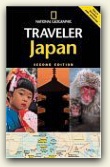
|
National Geographic Traveler, The: Japan
By Nicholas Bornoff
National Geographic Society, Washington, D.C., 2005
Take a tour of Japan guided by National Geographic--for generations synonymous with the thrill of discovery and exploration. Featured sites include both famous and lesser-known places, selected to help you experience the country in a fresh and exciting way. Providing in-depth descriptions of major cultural, architectural, and historical sites, this tour guide includes maps of specially-commissioned walks and drives, plus regional and city maps. Features include: in-depth site descriptions and background information; insightful features on history, culture, and contemporary life; more than 290 vivid color photographs; 21 detailed, full-color maps; mapped walking tours; specially-commissioned artwork;and complete visitor information, plus a guide to hotels, restaurants, shopping, entertainment, and festivals. Top
|
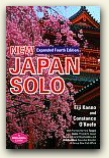
|
New Japan Solo
By Eiji Kanno and Constance O'Keefe
Kodansha International, New York, NY, 1998
Japan can be a bewildering place for the tourist traveling alone with little or no language skills. But with the right guide, it can be paradise. New Japan Solo, a book the New York Times called "indispensable," is that perfect travel companion. It provides a wealth of information far beyond the offerings of the typical travel guide: hundreds of listings for dining, lodging, and travel tips for all budgets--updated wtih current phone numbers, addresses, and prices; suggested itineraries for trips of varying lengths to all regions of Japan; more than 200 regional and city maps, with detailed transportation routes and landmarks; place names in both English and Japanese; "conversation cards"--passports to simple and enjoyable Japanese conversation; and concise directions, exact schedules, and latest train routes. New Japan Solo gives an insider's view of one of the Far East's most desireable travel destinations. Top
|

|
New Tokyo Bilingual Atlas, The
By Atsushi Umeda
Kodansha, Ltd., Tokyo, 1993
The New Tokyo Bilingual Atlas is the most comprehensive English-Japanese atlas of Tokyo available, making it an invaluable companion for tourists and foreign residents alike. The atlas features: 31 maps of The Greater Tokyo area, including Yokohama, with detailed and practical treatment of the major sections of the city; 15 thematic maps highlighting historic spots, museums, hotels, embassies, sports, medical facillities, foreign companies, and international schools; a detailed guide to the Tokyo subway and rail systems; a list of useful telephone numbers; useful Japanese phrases; and a comprehensive index. Top
|
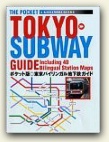
|
Pocket Tokyo Subway Guide, The
By Kodansha International
Kodansha International, Ltd., Tokyo, 2002
The Tokyo Subway Guide includes 40 bilingual station maps and is a comprehensive guide to the complicated metropolitan Tokyo transportation systems. It includes: details of Tokyo's 59 main subway stations, their exit numbers, and surrounding areas; an easy-to-understand guide to the twelved linked subway lines; a quick-find index; and useful information on hotels and inns, as well as airlines. It's a handy, lightweight size, perfect for both tourists and residents. Top
|
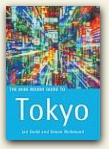
|
Rough Guide to Tokyo, The
By Jan Dodd and Simon Richmond
Rough Guides, Ltd., London, U.K., 2001
One of the best times to visit Tokyo is in the spring, usually from April to early May, when flurries of falling cherry blossoms give the city a soft pink hue. October and November are also good months to come; this is when you’ll catch the fireburst of autumn leaves in Tokyo’s parks and gardens.
The Rough Guide to Tokyo is the ultimate pocket guide to this dynamic city, featuring: informed accounts of every attraction, from futuristic Odaiba to Asakusa temple-town and from high-tech museums to tranquil tea-gardens; up-to-date reviews of where to stay, eat, shop, and go out; excursions to Mount Fuji, Yokohama's Chinatown, and the dazzling shrines of Nikko; and full-color maps with grid references for every recommendation, plus the Tokyo subway map. Top
|
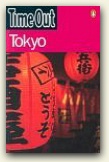
|
Time Out Tokyo
By Time Out Guides Limited
Penguin Books, London, U.K., 2003
This third edition of Time Out Tokyo has been compiled and researched by a team with over 200 years' combined experience of life in the Japanese capital. Written with both first-time visitors and long-term residents in mind, this book lifts the lid on the world's most bewildering city. The Tokyo guidebook includes: sightseeing--from the ancient temples of Asakusa to the shiny new high-rises of Roppongi Hills and beyond; all-new maps to key areas--in a city with virtually no street names, your destination is pinpointed; eating out--top picks from Tokyo's thriving restaurant scene, from top-class cuisine to the best weekend brunches; shopping--from cheap souvenirs to electronic gadgets to Japanese swords; bars and nightlife--the coolest watering holes in town, and the hottest places to dance until dawn; and accomodations--rooms to suit princes or paupers. Full addresses, opening times, and prices are included throughout the guidebook. Top
|
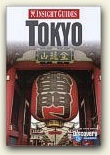
|
Tokyo--Insight Guides
By Francis Dorai and Brian Bell, Editors
APA Publications, Singapore, 2003
This guidebook provides a wealth of inspiring, in-depth background information. It also features: evocative photography that vivdly conveys a sense of everyday life; illuminating text that brings to life Tokyo's history, culture, arts, politics, and, above all, its people; incisive evaluations from traditional Asakusa to throbbing Roppongi, and from fashionable Shibuya to funky Shinjuku; detailed, cross-referenced maps in which all sites are clearly highlighted and numbered in relation to the text; and full listings of all the travel details, hotels, restaurants, and phone numbers you'll need on your trip. Top
|
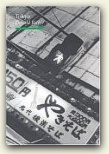
|
Tokyo: A View of the City
By Donald Richie
Reaktion Books Ltd., London, U.K., 1999
In Tokyo: A View of the City, Donald Ritchie, resident for more than fifty years, takes the reader on a tour of Japan's capital. Unlike other books on this fascinating place, this one gives a true feeling for what Tokyo is like, providing insights into its people, culture, and ambience.
Fashioning his account into a narrative in the shape of the city itself, Richie moves from the original and still sacred core--the Imperial Palace--to the outer neighborhoods, including: the Yoshiwara, the original red-light district; Ginza, the famous shopping street; and Shinjuku, the fabulous night-city. Richie includes excerpts from his journals (1947-98), providing insights about fads, fashions, and fixations in contemporary Japanese culture, from electronic pets to holographic bodhisattvas. Top
|
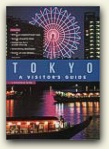
|
Tokyo: A Visitor's Guide
By Kodansha International, Ltd.
Kodansha International, Ltd., New York, N.Y., 2001
Tokyo: A Visitor's Guide provides all the essential information for a successful excursion to one of the world's most exciting cities. Whether you are on a business trip or a simple stopover, the Guide offers an intriguing array of sightseeing suggestions, including top-class restaurants, museums, and shopping centers. For business people on the go, the Guide delivers concise information on airport access, hotels, and health-and-fitness facilities. Other highlights include a listing of useful Japanese phrases, bilingual maps, and thumbnails for side-trips to Kyoto, Nara, and other popular destinations. Top
|

|
Weekend Adventures Outside Tokyo
By Tae Moriyama
Shufunotomo Co., Ltd., Tokyo, 1998
This is definitely not your usual type of travel guide, but rather a cornucopia of information spiced with historical allusions, anecdotes, unusual snippets of information, and homespun humor, written by a Japanese who has spent a lifetime exploring the byways of the Kanto region. Here you will find a colorful description of 20 historical towns within easy reach of the capital, for the visitor or foreign resident who wants to get away from the city while avoiding the main tourist destinations. Even those with no previous interest in Japanese history or culture will find this book engrossing from cover to cover, and a welcome companion on weekend forays out into the countryside. Top
|
|
|
|
|
|
